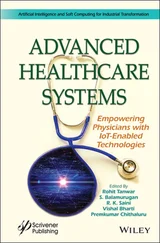1 ...8 9 10 12 13 14 ...31
| Drug |
Company |
Disease |
References |
| ND-L02-s0201 |
Nitto Denko Corporation |
Fibrosis |
[140] |
| ALN-VSP02 |
Alnylam Pharmaceuticals |
Solid tumors |
[141] |
| ALN-TTR02 |
Amyloidosis |
[142] |
| ALN-PCS02 |
Hypercholesterolemia |
[143] |
| DCR-MYC |
Dicerna Pharmaceuticals |
Multiple Myeloma |
[144] |
| ARB-001467 |
Arbutus Biopharma |
Hepatitis B |
[145] |
| TKM-100201 |
Tekmira Pharmaceuticals |
Ebola Virus Infection |
[146] |
| siRNA-EphA2-DOPC |
M.D. Anderson Cancer Center |
Advanced cancers |
[147] |
Similarly, few other examples of the nucleic acid delivery through lipid carriers that are under clinical investigation are given in Table 1.4.
1.7.3 Application in Delivery of Peptide/Hormone
Various lipid-based nanocarriers such as SLNs and liposomes have attempted to deliver peptide hormones such as Insulin, Gonadorelin, Levothyroxine, BSA, etc. In these categories, most of the lipid nanocarriers have demonstrated effectiveness in the delivery of hormones [148–150]. Various kinds of carriers explored to deliver peptides are given in Table 1.5.
Several nanocarriers have been explored for drug delivery application. However, majority of them do suffer from some known limitations such as low solubility of drugs, lack of targeting, toxicological profile, and physiochemical properties of individual carrier system. To overcome these issues, lipid-based carriers emerged to overcome these barriers and to ensure effective treatments for vulnerable patients in the past three decades. In nanotechnology platforms, lipid-based nanocarriers received notable attention in the field of drug delivery. Lipid nanoparticles such as SLNs, NLCs, SEDDS, crystalline mesophases, liposomes, and nanoemulsions are most widely used carriers in drug delivery due to their excellent pharmacokinetic/pharmacodynamics profiles, higher solubility of lipophilic drugs, and greater bioavailability. The lipid-based carriers owe lower cytotoxicity and are capable to target drugs to the desired site but do not interact with them. Therefore, these carrier systems do not interfere with the existing effect and potency of the drugs. The lipid-based nanocarriers are capable to entrap the drug in higher amount than other types of nanocarriers. There are several methods available to prepare the lipid-based carriers such as high-pressure homogenization, ultrasonication, solvent emulsification–diffusion, microemulsion-based method etc., which produced average and uniform size nanoparticles or nano-droplets. These nanocarriers can be characterized for size, zeta potential, morphological characteristics (SEM, TEM, AFM, and PLM), and thermal and behavioral composition. Lipid-based nanocarriers are being extensively used in drug delivery for various diseases. These carriers were explored enormously for delivering drug, therapeutic nucleic acids, hormones, and proteins utilized drug delivery, gene therapy by delivering nucleic acid, and hormonal therapy by peptides/proteins and hormones delivery. Several commercial products of lipid carriers are available in the market, and numerous products are under clinical trials.
Table 1.5 Lipid carrier system used for the delivery of different peptides/proteins and hormones.
| Carrier system |
Peptide/Hormone |
References |
| SLNs |
Recombinant human insulin |
[151] |
| Salmon calcitonin |
[152] |
| Gonadorelin |
[153] |
| Thymopentin |
[154] |
| Leuprolide |
[155] |
| Levothyroxine |
[156] |
| Lysozyme |
[157] |
| SMDDS |
Cyclosporine |
[158] |
| Liposomes |
Insulin |
[159] |
| Salmon calcitonin |
[160] |
| Albumin |
[161] |
| Leuprolide |
[162] |
| Epidermal growth factor |
[163] |
| Octreotide |
[164] |
| Growth hormone |
[165] |
| Nano-emulsion |
Bovine serum albumin |
[162, 163] |
| Aprotinin |
[164, 165] |
1. Hoffman, A.S., The origins and evolution of “controlled” drug delivery systems. J. Control. Release , 132, 153–163, 2008.
2. Lei, Y., Lu, Y., Qi, J., Nie, S., Hu, F., Pan, W., Wu, W., Solid self-nanoemulsifying cyclosporine A pellets prepared by fluid-bed coating: preparation, characterization and in vitro redispersibility. Int. J. Nanomedicine , 6, 795–805, 2011.
3. Kommuru, T.R., Gurley, B., Khan, M.A., Reddy, I.K., Self-emulsifying drug delivery systems (SEDDS) of coenzyme Q10: formulation development and bioavailability assessment. Int. J. Pharm. , 212, 233–246, 2001.
4. Raza, K., Singh, B., Singal, P., Wadhwa, S., Katare, O.P., Systematically optimized biocompatible isotretinoin-loaded solid lipid nanoparticles (SLNs) for topical treatment of acne. Colloids Surf. B: Biointerfaces , 105, 67–74, 2013.
5. Barua, S. and Mitragotri, S., Challenges associated with penetration of nanoparticles across cell and tissue barriers: a review of current status and future prospects. Nano Today , 9, 223–243, 2014.
6. Mohsin, K., Shahba, A.A., Alanazi, F.K., Lipid based self emulsifying formulations for poorly water soluble drugs-an excellent opportunity. Indian J. Pharm. Educ. Res. , 46, 88–96, 2012.
7. Gupta, M., Agrawal, U., Vyas, S.P., Nanocarrier-based topical drug delivery for the treatment of skin diseases. Expert Opin. Drug Deliv. , 9, 783–804, 2012.
8. Raphael, A.P., Garrastazu, G., Sonvico, F., Prow, T.W., Formulation design for topical drug and nanoparticle treatment of skin disease. Ther. Deliv. , 6, 197–216, 2015.
9. Smith, A. and Hunneyballlan, M., Evaluation of poly(lactic acid) as a biodegradable drug delivery system for parenteral administration. Int. J. Pharm. , 30, 215–220, 1986.
10. Siekmann, B. and Westesen, K., Submicron-sized parenteral carrier systems based on solid lipids. Pharm. Pharmacol. Lett. , 1, 123–126, 1992.
11. Schmidt, P.C., Pharmazeutische Technologie: Moderne Arzneiformen. Lehrbuch für Studierende der Pharmazie, Nachschlagewerk für Apotheker in Offizin, Krankenhaus und Forschung. Von R. H. Müller und G. E. Hildebrand. 348 Seiten, 117 Abbildungen, 57 Tabellen. Wissenschaftliche Verlagsgesellschaft mbH, Stuttgart 1997 , pp. 323–323, Pharm UnsererZeit, Germany, 1997.
12. Mann, E.A., Gurny, R., Doelker, E., Drug loaded nanoparticles-preparation methods and drug targeting issues. Eur. J. Pharm. Biopharm. , 39, 173–191, 1993.
13. Patidar, A., Thakur, D.A., Kumar, V., Verma, J., A review on novel lipid based nanocarriers. Int. J. Pharm. Pharm. Sci. , 2, 3035, 2010.
14. Pinto, J.F. and Muller, R.H., Pellets as carriers of solid lipid nanoparticles (SLN) for oral administration of drugs. Pharmazie , 54, 506–509, 1999.
15. Sznitowska, M., Gajewska, M., Janicki, S., Radwanska, A., Lukowski, G., Bioavailability of diazepam from aqueous-organic solution, submicron emulsion and solid lipid nanoparticles after rectal administration in rabbits. Eur. J. Pharm. Biopharm. , 52, 159–163, 2001.
16. Muller, R.H., Radtke, M., Wissing, S.A., Solid lipid nanoparticles (SLN) and nanostructured lipid carriers (NLC) in cosmetic and dermatological preparations. Adv. Drug Deliv. Rev. , 54, 131–155, 2002.
Читать дальше












